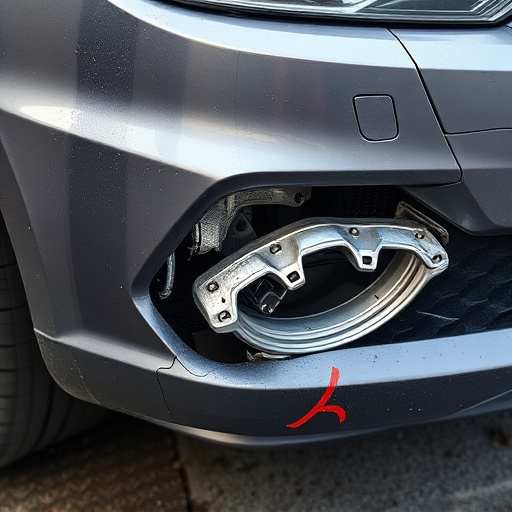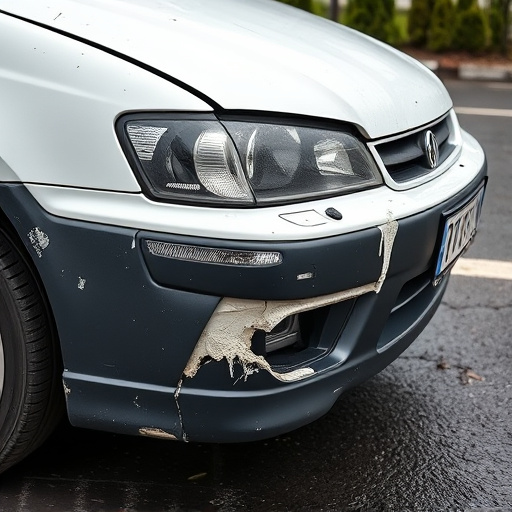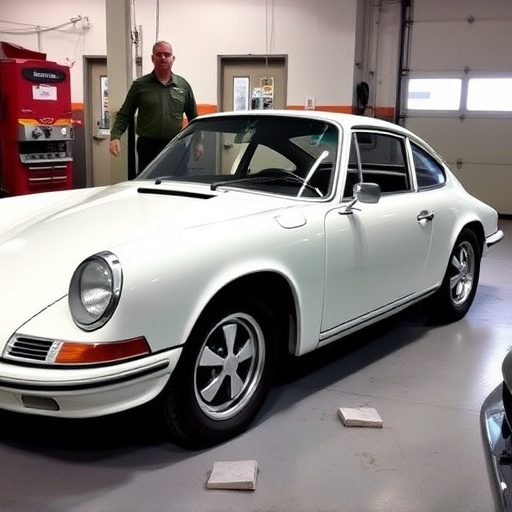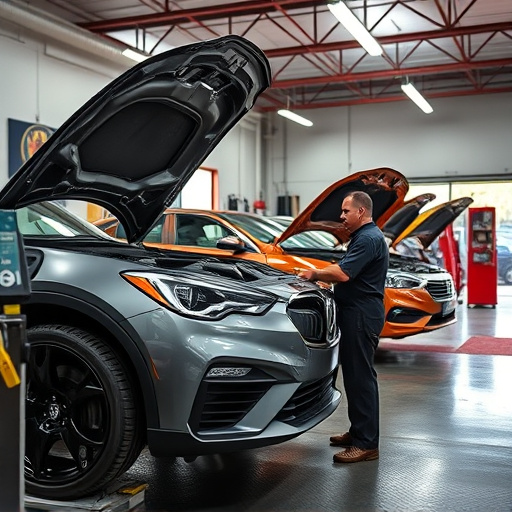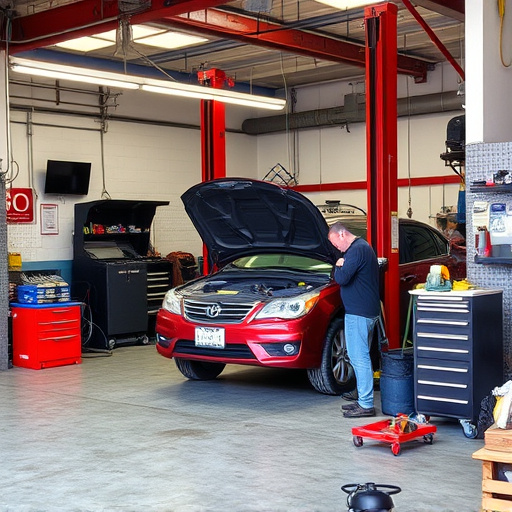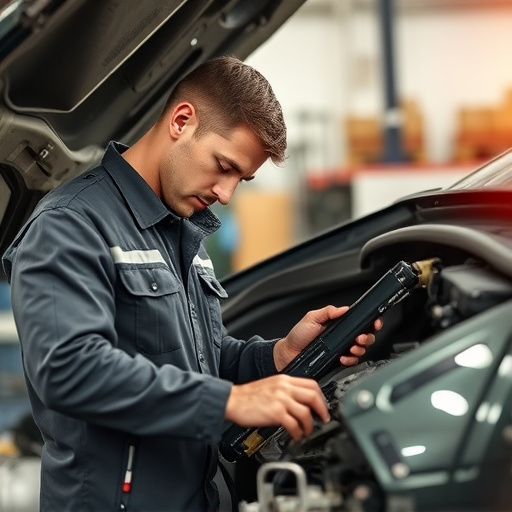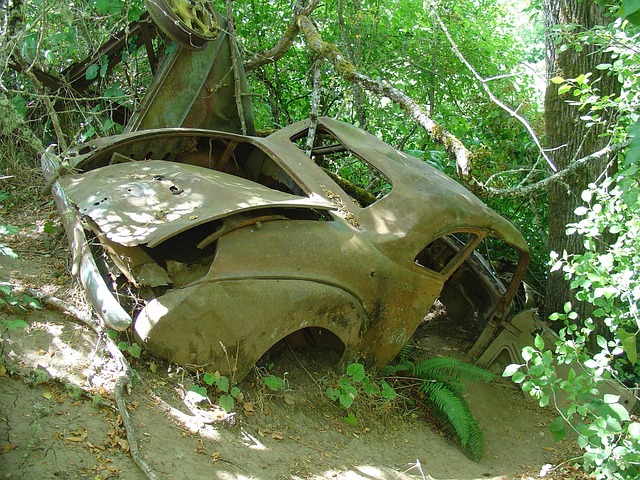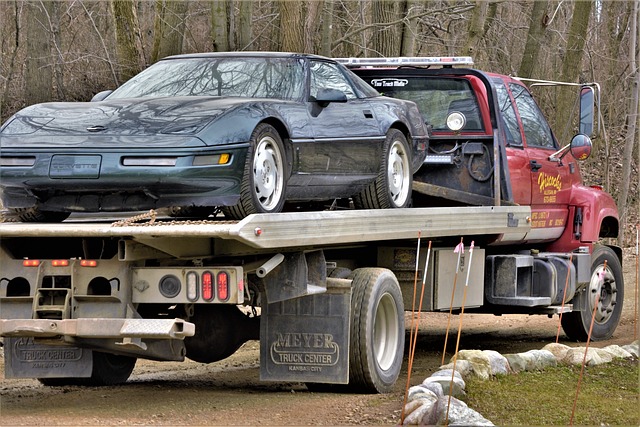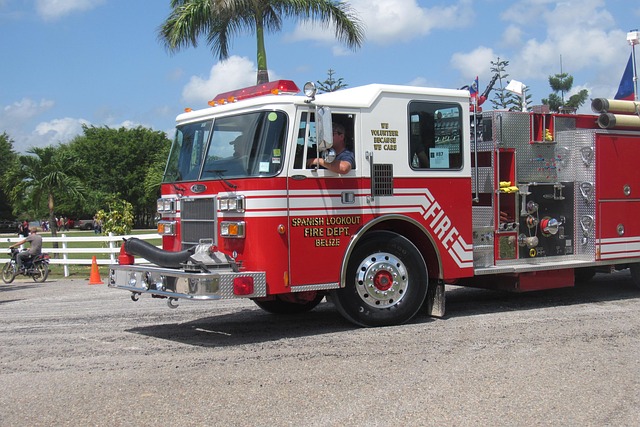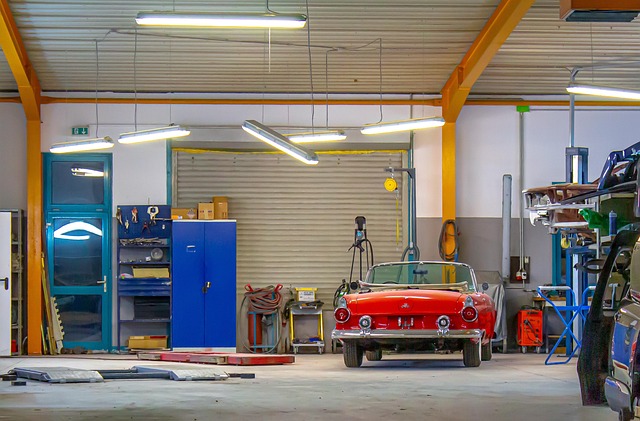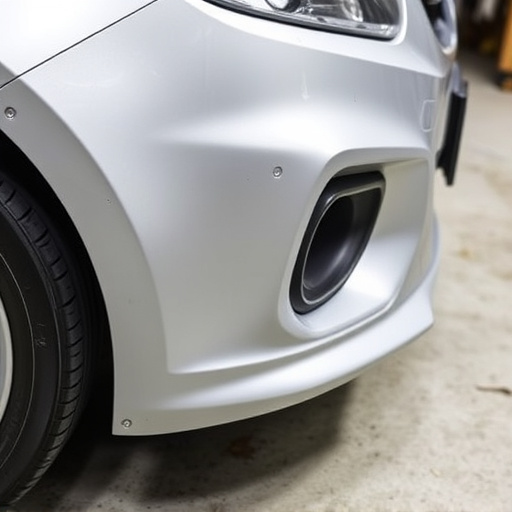Frame repair equipment lifespan varies based on usage and care. Professional machines outlast consumer tools. Regular maintenance, including oil changes and part replacements, optimizes performance, enhances productivity, and reduces costs. Quick fixes like blade sharpening and pad replacement prevent costly breakdowns. Well-maintained equipment delivers superior results for tasks like paint repairs and dent removal.
Frame repair equipment is a crucial investment for any automotive or collision repair shop. To ensure optimal performance and longevity, regular maintenance is essential. This article delves into understanding the lifespan of frame repair equipment and highlights the importance of routine upkeep. We explore common issues and offer quick fix solutions to keep your equipment running smoothly. By implementing these practices, you’ll maximize efficiency and minimize downtime, ultimately enhancing your shop’s productivity and customer satisfaction.
- Understanding Frame Repair Equipment's Lifespan
- Regular Maintenance: A Key to Efficiency
- Common Issues and Quick Fix Solutions
Understanding Frame Repair Equipment's Lifespan
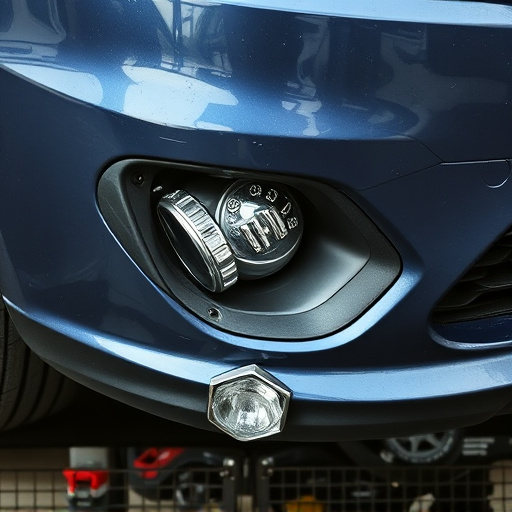
Frame repair equipment plays a critical role in automotive body shops, enabling efficient collision damage repair and ensuring the structural integrity of vehicles. However, like any tool or machinery, its lifespan is finite. Understanding this lifespan is crucial for optimal use and cost-efficiency. Regular maintenance checks are essential to identify potential issues early on, preventing catastrophic failures that could lead to downtime and costly repairs.
The lifespan of frame repair equipment depends on various factors, including frequency of use, quality of maintenance, environmental conditions, and the specific model. High-quality machines designed for professional automotive body shops tend to last longer than consumer-grade tools used in less demanding environments. Car bodywork experts should prioritize regular oil changes, thorough inspections, and prompt replacement of worn-out parts to maximize the life of their frame repair equipment, thereby enhancing productivity and minimizing operational costs.
Regular Maintenance: A Key to Efficiency
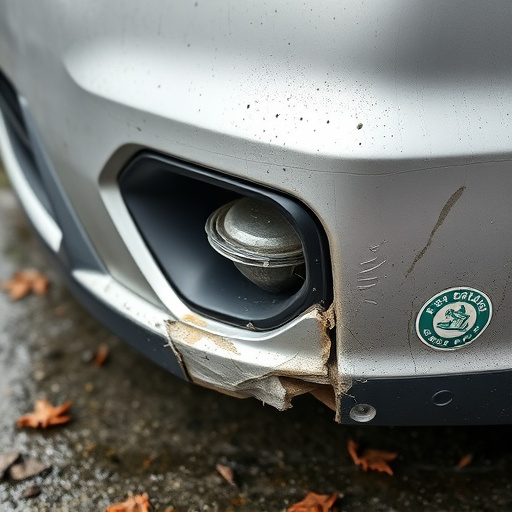
Regular maintenance is an indispensable aspect when it comes to utilizing frame repair equipment effectively. Just like any other machine, proper upkeep ensures that these tools function at their peak performance levels, delivering precise and efficient results in car body restoration or automotive body work projects. By scheduling routine check-ups and cleaning sessions, users can identify potential issues early on, preventing major breakdowns and costly repairs down the line.
This proactive approach not only extends the lifespan of frame repair equipment but also guarantees consistent quality in vehicle bodywork applications. Well-maintained tools are more reliable, providing technicians with the precision they need to make intricate adjustments during restoration processes. As a result, regular maintenance contributes significantly to enhancing overall efficiency and productivity in any automotive body shop or garage engaging in specialized repairs and modifications.
Common Issues and Quick Fix Solutions
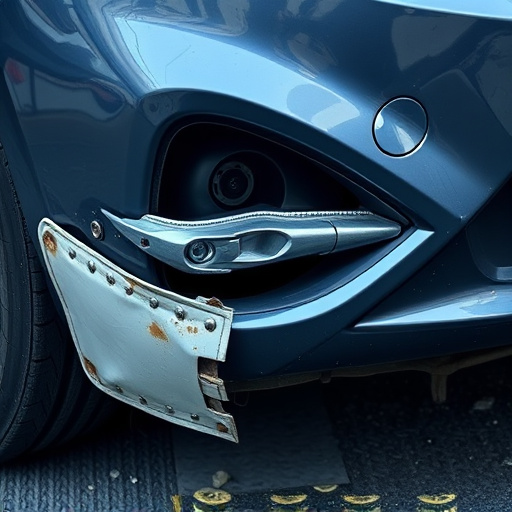
Even the best frame repair equipment can face issues over time if proper care and maintenance are neglected. Common problems include dull blades, worn-out grips, and faulty power sources. To address these, quick fix solutions like sharpening blades, replacing grip pads, and checking electrical connections can significantly enhance the performance of your frame repair tools. Regular maintenance ensures that every component functions at peak efficiency, ultimately leading to better results in tasks such as car paint repair or more intricate collision repair shop procedures, including paintless dent repair.
Frame repair equipment is a vital investment for any automotive or bodywork professional. By understanding its lifespan, implementing regular maintenance routines, and addressing common issues promptly, technicians can ensure optimal performance and extended longevity of their tools. Regular upkeep not only enhances efficiency but also contributes to safer, more precise repairs, ultimately benefiting both the technician and the end-result.
